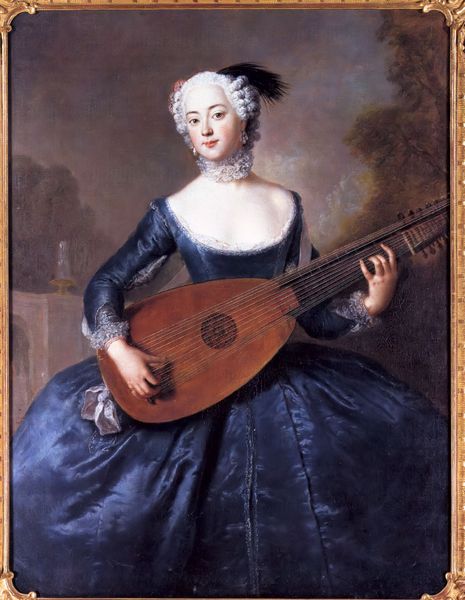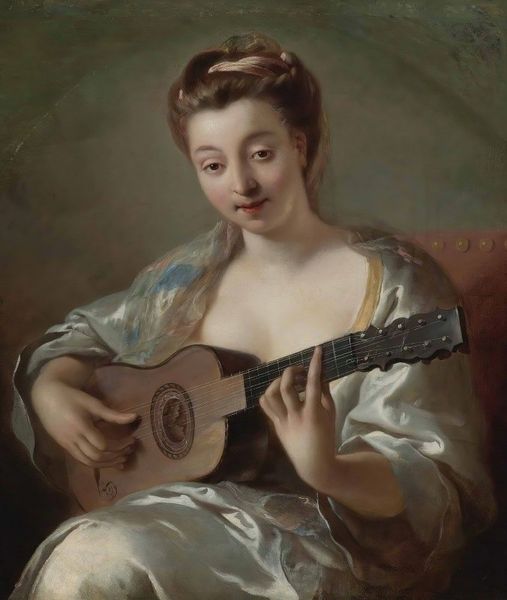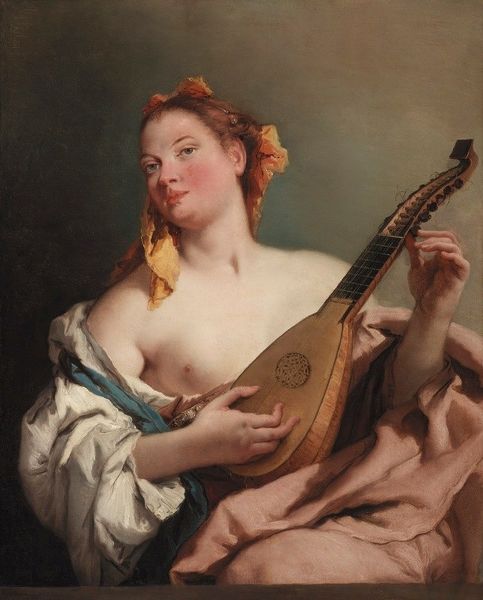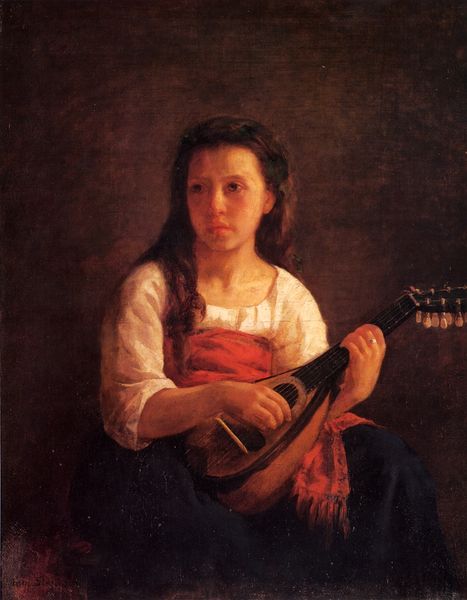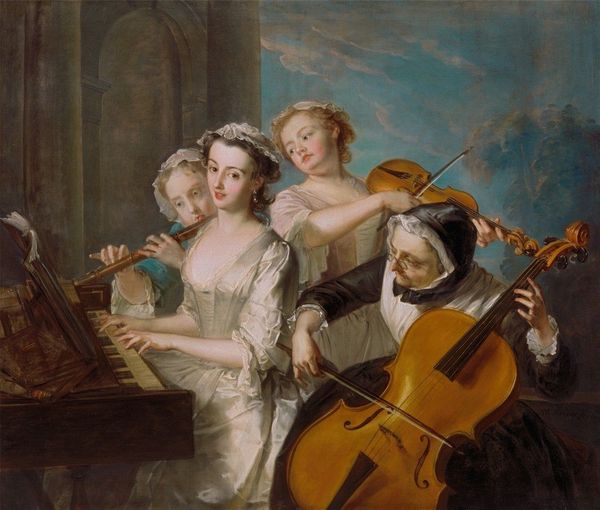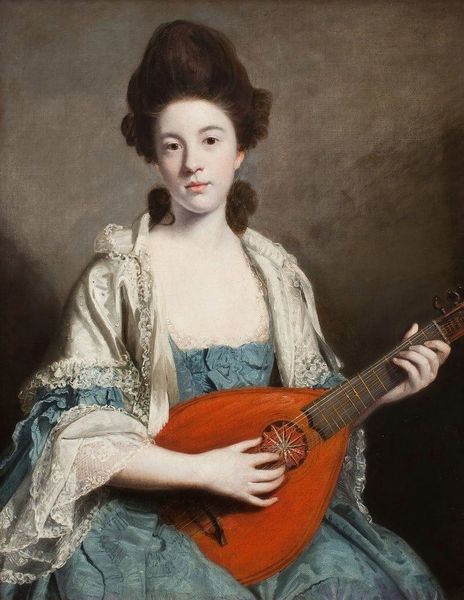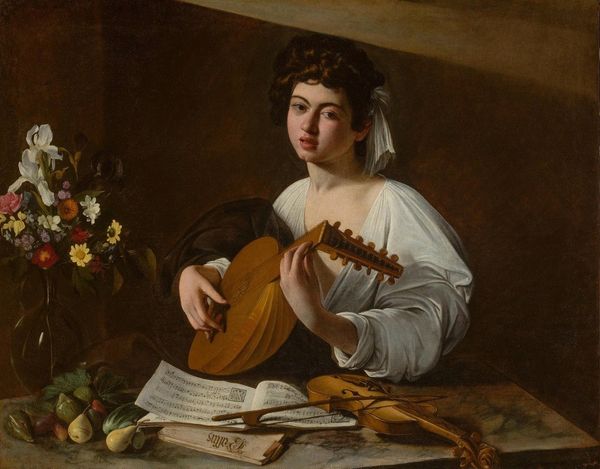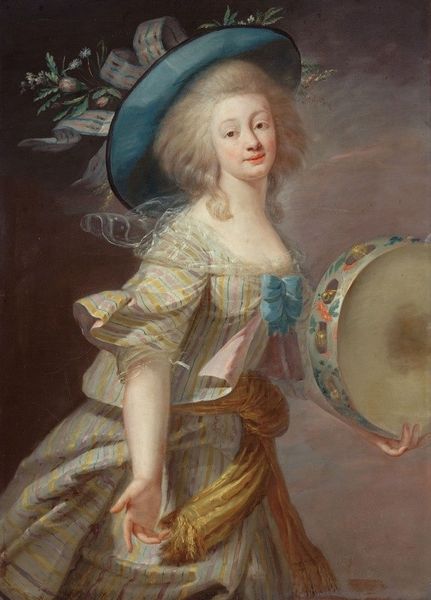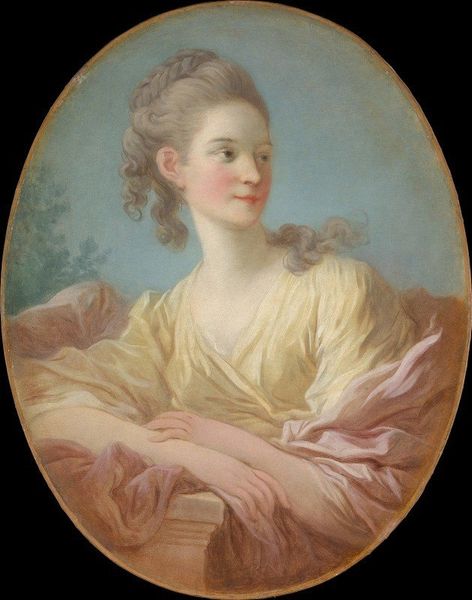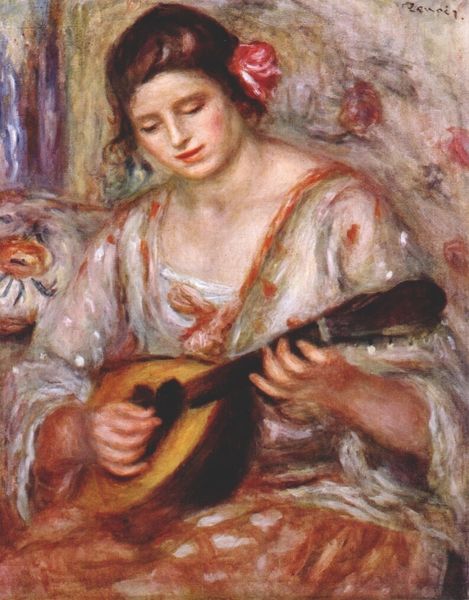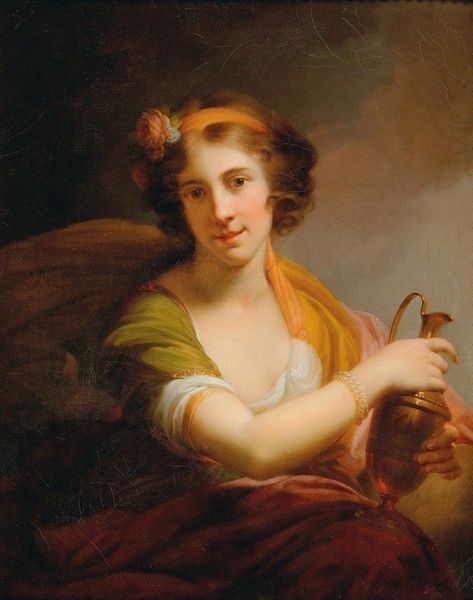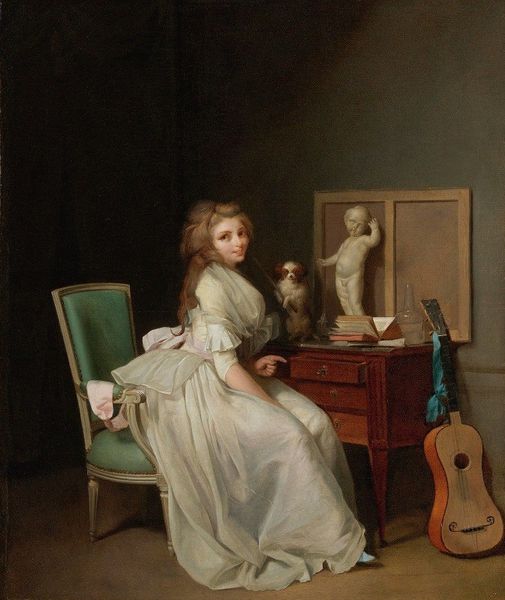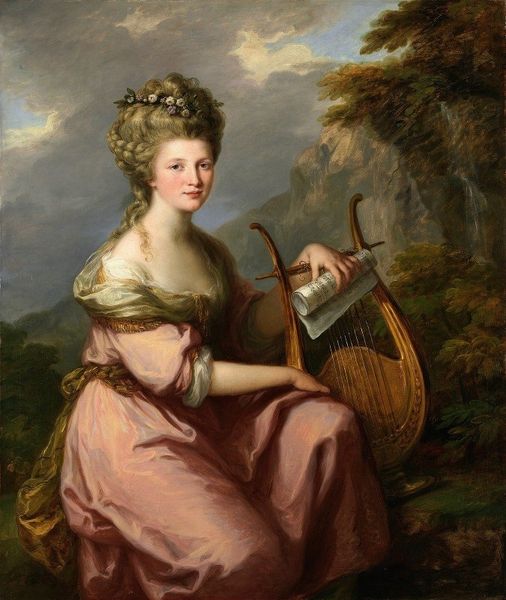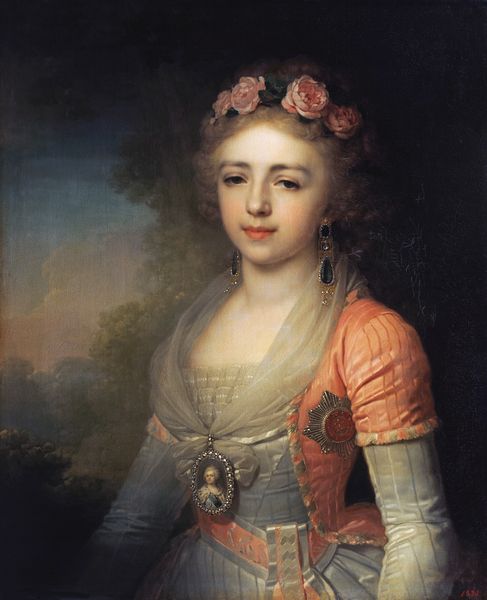
Portrait de Marie-Louise-Adélaïde-Jacquette de Robien, vicomtesse de Mirabeau 1774
0:00
0:00
Copyright: Public Domain: Artvee
Elisabeth Louise Vigée Le Brun painted this portrait of Marie-Louise-Adélaïde-Jacquette de Robien, vicomtesse de Mirabeau, during a time of shifting social roles and artistic expression. Le Brun, one of the few women admitted to the French Royal Academy of Painting and Sculpture, navigates the complexities of representing women in a patriarchal society. The Vicomtesse is depicted with a certain relaxed sensuality, playing a guitar, an emblem of leisure and refinement. However, it's worth noting that the image also reflects the limited roles women were often confined to, even within aristocratic circles. What does it mean to see a woman portrayed both as an object of beauty and a cultivated individual? Le Brun, who had to flee France during the Revolution due to her association with Marie Antoinette, painted portraits that often emphasized the grace and elegance of her subjects, and the Vicomtesse is no exception. But, can we also read this as an expression of the artist's own negotiation of identity and status within a changing world?
Comments
No comments
Be the first to comment and join the conversation on the ultimate creative platform.
